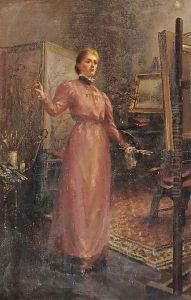Maud M. Whitmore Paintings
Maud M. Whitmore, whose full name is Maud Mary Whitmore, was an English-born Canadian artist known for her watercolours and portraits. Born in England in 1860, Whitmore moved to Canada with her family as a child, where she developed her artistic talents. Maud’s early life was marked by her family's travels and eventual settlement in Canada, which provided her with a rich tapestry of landscapes and subjects for her work.
Whitmore's artistic journey began in earnest when she undertook studies in art. She was particularly influenced by the prevailing styles of her time, including Impressionism and the Arts and Crafts movement. Despite the challenges faced by women in the art world during the late 19th and early 20th centuries, Whitmore managed to carve out a space for herself as a respected artist.
Throughout her career, Maud M. Whitmore exhibited her work widely, participating in shows with various art associations and gaining recognition for her delicate watercolour paintings. Her portraits, which often depicted individuals in her social and familial circles, were praised for their sensitivity and attention to detail. Whitmore's ability to capture the essence of her subjects made her a sought-after portraitist during her lifetime.
Whitmore continued to paint and exhibit her work into the early 20th century, maintaining an active presence in the Canadian art scene. Her contributions to Canadian art were not only in her paintings but also in her role as a mentor and inspiration to other artists, particularly women, who were navigating the complexities of the art world during that period.
Maud M. Whitmore passed away in 1930, leaving behind a legacy of work that documented the people and the landscapes of her adopted country. Although not as widely known today, her paintings remain a testament to her skill and dedication to her craft. Whitmore's life and work continue to be of interest to art historians and collectors, particularly those specializing in Canadian art history and the role of women artists in the development of the Canadian art identity.
